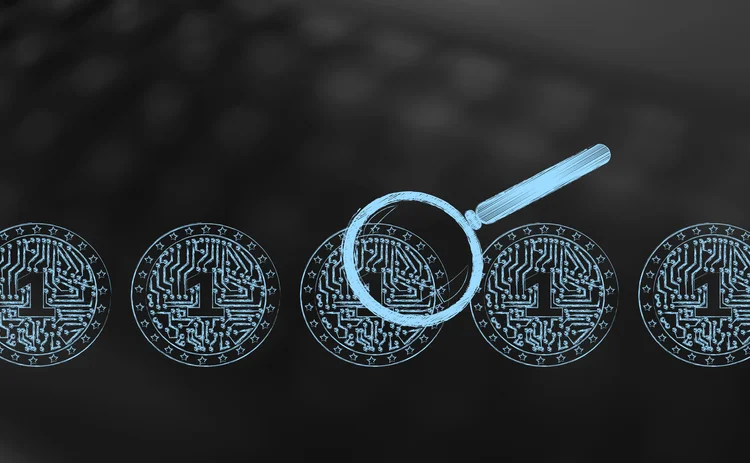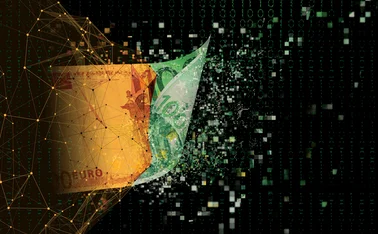
In search of a better definition of digital money
Dave Birch tries to cut through the noise on cryptocurrencies, blockchains and everything in between

The absolutely fascinating topic of central bank digital currency is attracting a great deal of (deserved) attention but much of the conversation around the subject is frustrating. I see commentary that almost randomly switches between “digital currency”, “cryptocurrency” and “digital fiat” to the point that the terms are essentially meaningless. We need a framework for discussing the topic in a more productive way.
Let’s begin by exploring what the central concept is all about. Ben Dyson and Jack Meaning from the Bank of England discuss a particular kind of central bank digital currency (what some would call “digital fiat”) with quite specific characteristics. This seems to be to an excellent starting point. They describe a form of digital money that is:
- Universally accessible (anyone can hold it);
- Interest-bearing (with a variable rate of interest);
- Exchangeable for banknotes and central bank reserves at par (i.e. one-for-one);
- Based on accounts linked to real-world identities (not anonymous tokens);
- Withdrawable from your bank account (in the same way that you can withdraw banknotes).
This seems to me to be quite sensible definition: digital fiat is this particular kind of digital money. We can now start to fill in the blanks about how such a system might work. For example, should it be centralised, distributed or decentralised? Given that, as The Economist noted in an article about giving access to central bank money to everybody, “administrative costs should be low, given the no-frills nature of the accounts”, and given that a centralised system has the lowest cost, that would seem to point toward something like M-Pesa but run by the government.
Some years ago David Andolfatto, senior vice-president of the Federal Reserve Bank of St Louis, said that it was “hard to see the downsides to central banks supplying digital currency”. I agree, although I have long held that central banks will be only one of the providers of digital money and, as we will see, the battle lines are already being drawn up. The combination of the revolutionary but unproven with the evolutionary but nevertheless game-changing gives us a vision of a future central bank digital currency that is wholly practical.
There are, however, other arguments in favour of using newer and more radical technological solutions, not least of which is our old friend privacy. Again, as The Economist notes, people might well be “uncomfortable with accounts that give governments detailed information about transactions, particularly if they hasten the decline of good old anonymous cash”. However, as I have often written, I think there are ways to deliver appropriate levels of privacy into this kind of transactional system and pseudonymity is an obvious way to do this efficiently within a democratic framework.
So, would such a digital currency be a cryptocurrency? The answer is no, but we might use cryptocurrency to create a digital currency, thanks to the magic of “tokens”. Kevin Werbach, professor at the Wharton School, published a very good article about these recently. He set out a useful taxonomy, saying that:
- There is cryptocurrency: the idea that networks can securely transfer value without central points of control;
- There is blockchain: the idea that networks can collectively reach consensus about information across trust boundaries;
- And there are crypto assets: the idea that virtual currencies can be “financialised” into tradable assets.
I might use a slightly different, more generalised approach (because a blockchain is only one kind of shared ledger that could be used to transfer digital values around), but Werbach summarises the situation exceedingly well. His perspective is that cryptocurrency is a revolutionary concept but the jury is still out on whether the revolution will succeed, whereas the shared ledger and the assets that might be managed using those shared ledgers are game-changing innovations but essentially evolutionary. The idea of such assets, which I will label digital bearer instruments, goes back to the long-ago days of DigiCash and Mondex, but the idea of implementing them using technology that is, in principle, available to every single person on the planet is wholly new.
Here’s my take on the situation. We have a value-transfer layer that may or may not be implemented using a blockchain, but, however constructed, it makes for the secure transfer of digital values from one storage area (“wallet”) to another. We then have a crypto-asset layer built on top of that to link the digital values to something in the real world – of course, this crypto-asset layer could be null and the digital value itself be the value traded, as in the case of bitcoin – giving us digital money. We then have a crypto-market layer to link the wallets to entities in the real world (e.g. people or companies), giving us digital identity.
Now that digital identities can exchange digital money, we have a functioning base layer for a new financial system based on digital bearer instruments that require no clearing or settlement, in contrast to the existing financial system based on electronic currency, accounts and fiat cash. In this formulation, then, the digital bearer instruments can be exchanged by “smart contracts” – I prefer the term “consensus applications”. The general term for these bearer assets is “token”, and thus the world of bitcoins and tokens and initial coin offerings (ICOs) all comes together.
Only users who have a paid subscription or are part of a corporate subscription are able to print or copy content.
To access these options, along with all other subscription benefits, please contact info@centralbanking.com or view our subscription options here: subscriptions.centralbanking.com/subscribe
You are currently unable to print this content. Please contact info@centralbanking.com to find out more.
You are currently unable to copy this content. Please contact info@centralbanking.com to find out more.
Copyright Infopro Digital Limited. All rights reserved.
As outlined in our terms and conditions, https://www.infopro-digital.com/terms-and-conditions/subscriptions/ (point 2.4), printing is limited to a single copy.
If you would like to purchase additional rights please email info@centralbanking.com test test test
Copyright Infopro Digital Limited. All rights reserved.
You may share this content using our article tools. As outlined in our terms and conditions, https://www.infopro-digital.com/terms-and-conditions/subscriptions/ (clause 2.4), an Authorised User may only make one copy of the materials for their own personal use. You must also comply with the restrictions in clause 2.5.
If you would like to purchase additional rights please email info@centralbanking.com test test test








